
Despite the ongoing partial government shutdown, USDA continues to provide grain export inspection numbers. And China has made a welcome appearance in the latest set of data, according to Farm Futures senior grain market analyst Bryce Knorr.
“China finally began shipping out some of the purchases made earlier after starting trade negotiations with the U.S. again,” he says. “Six loads in all, split between the Gulf and Pacific Northwest, headed to China with 15.3 million bushels. That was easily the biggest week of the marketing year for the world’s largest importer.”
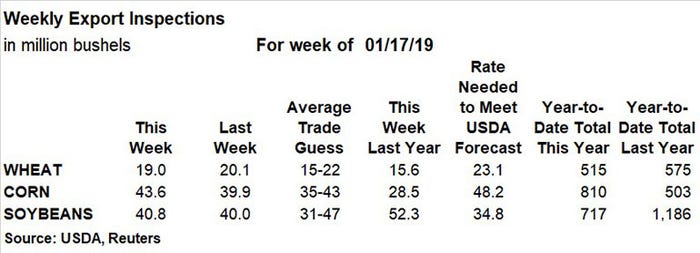
Still, year-to-date shipments remain well behind 2017 numbers, although Knorr acknowledges this is at least a start.
“But lack of confirmation of new purchases from closed USDA offices continues to be a negative force,” he adds.
Wheat and corn movement was also good, with limited impact on the market, Knorr says.
“Corn was already fading, and wheat’s gains came early on more fears shipments out of the Black Sea could be diminishing, as USDA forecast back in December,” he says.
Corn export inspections last week totaled 43.6 million bushels, which was slightly ahead of the prior week’s tally of 39.9 million bushels and just above trade expectations that ranged between 35 million and 43 million bushels. The weekly rate needed to match USDA forecasts still moved higher, however, to 48.2 million bushels. Cumulative totals of 810 million bushels for this marketing year remain 61% ahead of 2017/18’s pace.
Mexico was the leading destination for U.S. corn export inspections last week, with 12.7 million bushels, followed closely by Japan (12.1 million). Other top destinations included Colombia (6.2 million), Peru (4.3 million), New Zealand (2.5 million) and South Korea (2.5 million).
Soybean export inspections last week reached 40.8 million bushels, besting the prior week’s total of 40.0 million by a slim margin and landing in the middle of trade expectations, which ranged between 31 million and 47 million bushels. The weekly rate needed to match USDA forecasts moved slightly lower, to 34.8 million bushels. Cumulative marketing year-to-date totals of 717 million bushels lag nearly 40% lower than 2017/18’s pace.
China moved back to the No. 1 destination for U.S. soybean export inspections for the first time in months, with 15.3 million bushels. Other top destinations included Egypt (4.4 million), Mexico (3.6 million), Spain (3.2 million), South Korea (2.2 million) and Bangladesh (2.1 million).
Wheat export inspections last week reached 19.0 million bushels, slightly down from the prior weeks’ total of 20.1 million bushels but on the high end of trade estimates that ranged between 15 million and 22 million bushels. The weekly rate needed to meet USDA forecasts climbed to 23.1 million bushels, while cumulative marketing year-to-date totals of 515 million bushels are about 10% lower year-over-year.
Egypt was the No. 1 destination for U.S. wheat export inspections last week, with 4.3 million bushels. Other top destinations included Mexico (4.0 million), the Philippines (3.6 million), Japan (2.0 million) and Taiwan (1.9 million).
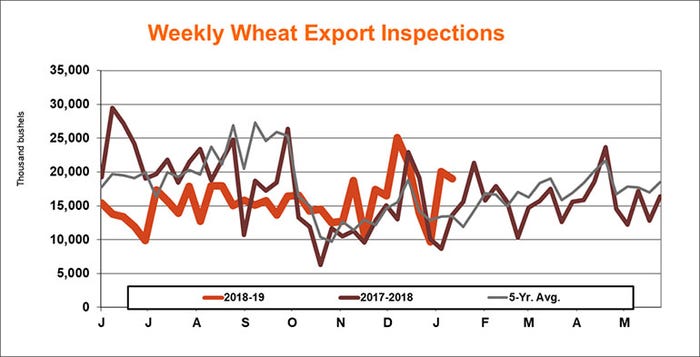
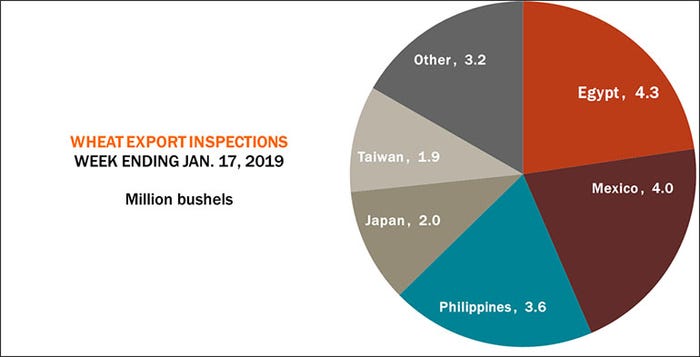
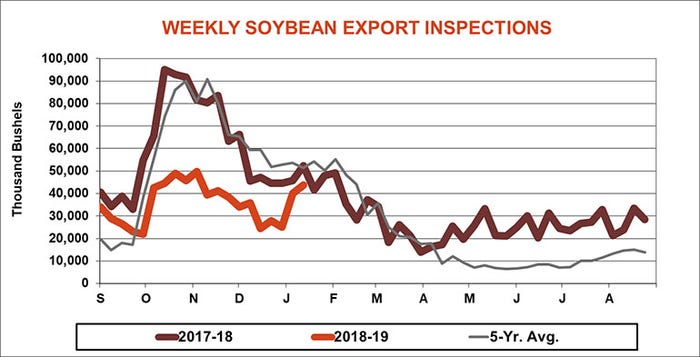

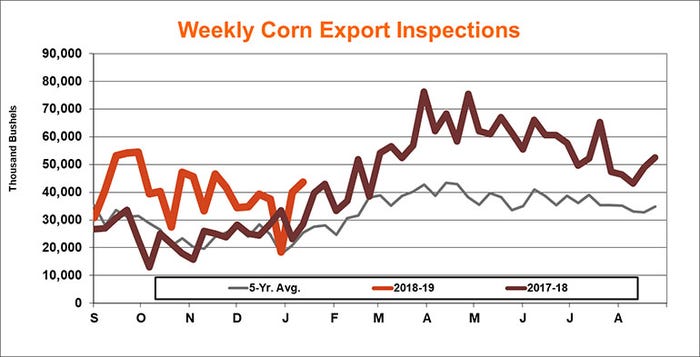

About the Author(s)
You May Also Like






